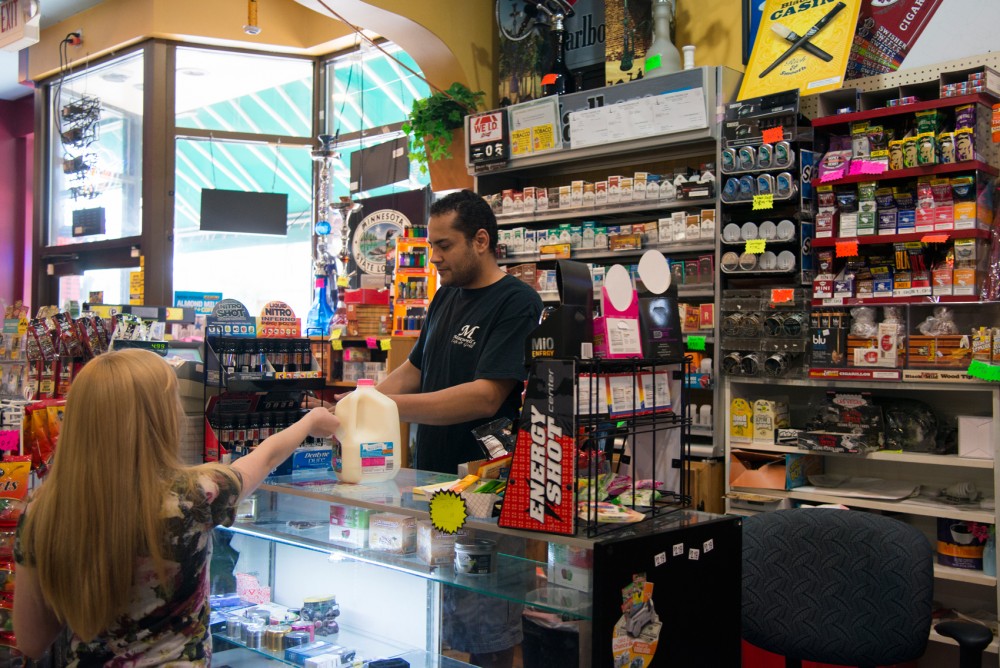Flavored tobacco products may soon get the boot in Minneapolis convenience stores, which might cut into revenues but could potentially improve citizens’ health.
To make flavored tobacco products less accessible to youth, a proposed city ordinance would disallow sales in any businesses except tobacco shops. While some residents and health officials favor the change, convenience store owners in the University of Minnesota area say they’re worried about losing their customers.
City officials like Minneapolis Health Department Commissioner Gretchen Musicant, who spoke in favor of the ordinance at a City Council hearing last week, say they’re concerned bright, colorful packaging on flavored tobacco products are luring kids into smoking. Before the ordinance can move to the full council for a vote of
approval, a committee will review and vote on the proposal June 22.
Adam Hussein, who’s a manager at Maxwell’s Café and Grill in the Marcy-Holmes neighborhood, said he’s concerned his business will lose customers if the proposed ordinance passes. The café and its sister shop, Maxwell’s Market, attract tobacco-buying customers who also buy food and drink, which are the store’s main sources of profit.
“I would say that it would be better if they just changed the [flavored tobacco] packaging to say what flavor it is without putting colorful stuff on it,” he said.
The store doesn’t get many adolescents looking to buy tobacco, Hussein said. Because the store is located a few blocks from the University, most of his customers are college students, he said.
Unlike Maxwell’s, 8th Street Market, which is also located in Marcy-Holmes, makes much of its profits off flavored tobacco.
“The majority of our customers come in just for that, and if we are out they will go somewhere that has it,” manager Sarah Knefelkamp said.
She said that as much as half of the store’s sales come from flavored tobacco products like Swisher Sweets cigars.
Non-cigarette tobacco products like shisha — a flavored tobacco used for smoking hookah — are commonly used among people ages 18 to 24. In fact, 15.8 percent of Minnesotans in that age range have used non-cigarette tobacco, according to a recent survey by the Minnesota Department of Health.
“I think flavored tobacco catches on because [it seems] different than a cigarette, less real maybe,” said Department of Health researcher Pete Rode.
Though the state health department hasn’t taken an official stance on the ordinance, Rode said, it stresses that there are health concerns associated with nicotine use.
Some Minneapolis residents and business owners think the city’s youth would be better served by a complete ban on flavored products.
Tony Rammer, owner of a Minneapolis BP gas station, said he wants to find a more effective method than the proposed ordinance for keeping young people from getting flavored tobacco, like a complete ban.
Minneapolis resident Adam Denny, who started chewing flavored tobacco when he was 16 years old and hasn’t stopped using tobacco products since then, said he’s worried about his 1-year-old daughter growing up and falling into the same trend.
“Looking back, I know that fruity taste is what made me want to take my first dip and has kept me coming back again and again,” he said. “Parents certainly bear a great responsibility, but like in so many other aspects of raising children, it takes a community to ensure success.”







